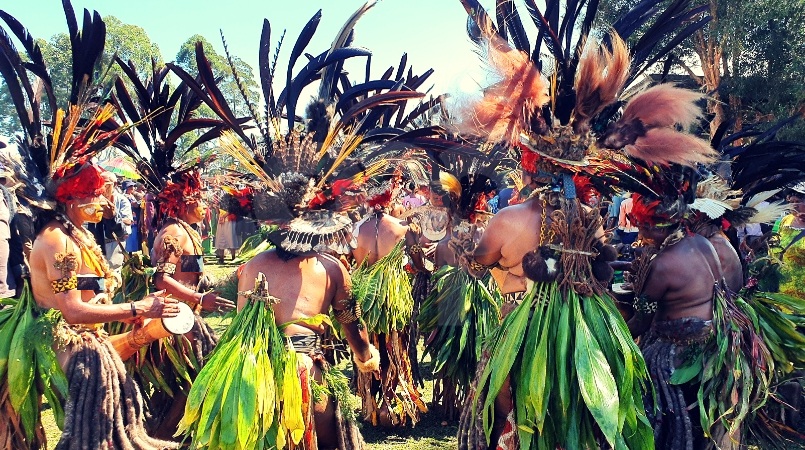
In Papua New Guinea, a land renown for the beauty of its birds, people retain a close relationship with nature ― particularly with birds.
Coming from the highlands province of Chimbu, where the feathers of birds continue to be used in extravagant ceremonial headdresses, Grace Nugi, a conservation scientist, wondered what the impact of this harvesting might be.
As part of her honours degree at University of Papua New Guinea, Nugi worked with the Wildlife Conservation Society (WCS) to understand the impacts of cultural use on Pesquet’s Parrot (also known as the New Guinean Vulturine Parrot) a species with vibrant red feathers which are typically used to decorate headbands.
Nugi focused her study on Kerowagi District in Chimbu Province.
Her study was supported by funding from The Christensen Fund. The results of her study have just been published internationally in the scientific journal Emu – Austral Ornithology with the assistance of her co-author, Nathan Whitmore of WCS: https://www.tandfonline.com/doi/full/10.1080/01584197.2019.1676162
Using a combination of surveying techniques and mathematical methods, she revealed between 160,000 ‒ 280,000 Pesquet’s Parrots were likely harvested for the headdresses present in Kerowagi District alone.
Although these headdresses are treated as heirlooms, her data suggests that around ~8 percent of the Pesquet’s Parrot population would get harvested every year for demand in Kerowagi District alone.
Given that her study only focused on one district in the highlands, Nugi considers her results alarming.
“I’d be lying if I said I wasn’t worried. My study only focused on one of the six districts in Chimbu Province, so imagine if every headdress owner in the Province, let alone the highlands, is accounted for. ”
Nugi also points out that the numbers of dead birds present in the headdresses in Kerowagi dwarfs the best estimates of the total Pesquet’s Parrot population by 4‒6 times. She suggests that since the Pesquet’s Parrot population is widely spread across areas of remote foothill forest, direct protection conservation management is not likely to be viable in PNG.
“Site based conservation of these parrots just isn’t that feasible. The cost and logistics of operating in such remote areas of PNG would be prohibitive.”
Rather, Nugi advocates the most practical conservation intervention is to reduce hunting by prolonging the lifespan of the existing headdresses.
She added: “We should focus on what is more practical and realistic when it comes to making conservation decisions in PNG. For these parrots, it comes down to encouraging people to protect their headdresses. It may seem odd ‒ but we have to conserve the dead to protect the living.”
Nugi is mindful that while Pesquet’s Parrot is a must-have in headdresses of Chimbu today, this did not appear to be the case 100 years ago, and that the future generations of highlanders users may have substantially different perceptions of beauty and cultural authenticity.
(Simbu traditional dancers)
